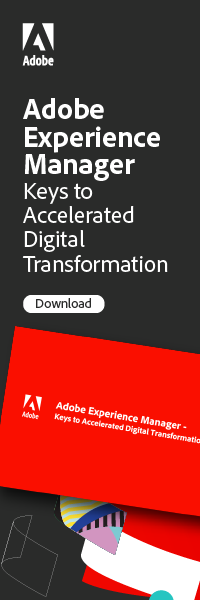
Complete On page SEO, Off page SEO & Technical SEO Checklist
Image by creativeart on Freepik
Table of Content:
- Complete On Page SEO Checklist
- Off Page SEO Checklist
- Technical SEO Checklist
- FAQ for On Page SEO Checklist.
- FAQ for Off Page SEO Checklist.
- FAQ for Technical SEO Checklist.
Complete On page SEO checklist:
Certainly! On-page SEO Checklist is essential for optimizing your web content to rank well in search engines.
Here’s the complete on-page SEO checklist:
1: Keyword Research:
Start by researching relevant keywords for your content. Choose primary and secondary keywords to target. For complete information on Keyword Research visit our blog On-Page SEO – All about Keyword Research
2: High-Quality Content:
Create valuable, informative, and engaging content. Make sure it’s relevant to the keywords you’ve chosen.
A more detailed article on high-quality content is available at Read More….
3: Title Tag:
Craft a compelling and concise title that includes your primary keyword. Keep it under 60 characters.
A more detailed article on the title tag is available at Read More…
4: Meta Description:
Write a meta description that summarizes your content and includes your keywords. Keep it under 160 characters.
A more detailed article on the meta description is available at Read More…
5: Header Tags:
Use header tags (H1, H2, H3, etc.) to structure your content. Include keywords naturally in your headers.
A more detailed article on the header tags is available at Read More…
6: URL Structure:
Create clean and user-friendly URLs with relevant keywords. Avoid using complex symbols or numbers in your URLs.
A more detailed article on the URL structure is available at Read More…
7: Image Optimization:
Optimize images by compressing them for faster loading times. Use descriptive file names and alt text that include keywords.
A more detailed article on image optimization is available at Read More…
8: Internal Linking:
Include relevant internal links to other pages on your website. It helps with navigation and spreading SEO value.
A more detailed article on internal linking is available at Read More…
9: External Links:
Add authoritative and relevant external links to trusted sources. Make sure they open in new tabs to keep users on your site.
A more detailed article on external linking is available at Read More…
10: Mobile Optimization:
Ensure your content is mobile-friendly and responsive. Google ranks mobile-optimized sites higher.
A more detailed article on external linking is available at Read More…
11: Page Loading Speed:
Improve loading speed by optimizing images and using a fast hosting provider. Faster websites rank better and offer a better user experience. Read More…
12: Readability:
Make your content easy to read with proper formatting and clear language. Break up long paragraphs and use bullet points or lists.
A more detailed article on Readability is available at Read More…
13: Social Sharing:
Add social sharing buttons to encourage readers to share your content. This can improve visibility and traffic.
A more detailed article on Social Sharing is available at Read More…
14: Schema Markup:
Implement schema markup for rich snippets in search results. It enhances your content’s visibility and click-through rate.
A more detailed article on Schema Markup is available at Read More…
15: User Experience:
Focus on providing a great user experience with intuitive navigation. This keeps visitors engaged and encourages them to stay longer.
16: Regular Updates:
Keep your content up-to-date with fresh information. Google favors regularly updated content.
17: Monitoring & Analysis:
Use tools like Google Analytics and Google Search Console to track your performance. Adjust your strategy based on the data.
Remember that on-page SEO is an ongoing process, and it’s essential to keep up with search engine algorithm changes and best practices to maintain and improve your website’s search engine rankings.
Complete Off page SEO Checklist:
1. High-Quality Backlinks:
Try to get links from other websites to yours. These are like votes of confidence for your site. The more votes you have, the better your website looks to search engines.
2. Guest Posting:
Write articles for other websites in your field. Ask them to include a link back to your site. It’s a way to introduce yourself to a new audience.
3. Broken Link Building:
Help website owners by finding links on their site that don’t work. Suggest they replace those broken links with links to your content.
4. Influencer Connections:
Connect with popular people on the internet (influencers) in your niche. If they mention your website, it can bring lots of new visitors.
5. Social Media Activity:
Be active on social media platforms. Share your website’s content and talk with your followers. When people share your content, it can help with your SEO.
6. Content Marketing:
Create high-quality content that people want to share. This could be articles, videos, or infographics. The more your content is shared, the better it is for your SEO.
7. Online Reviews:
Encourage customers to leave reviews about your business on websites like Google My Business or Yelp. Positive reviews can help with your local SEO.
8. Local SEO:
If your business is local, make sure it’s listed in local directories, and keep your contact information consistent across the web.
9. Forum Participation:
Join online forums and communities related to your field. Be helpful and mention your website when it’s relevant.
10. Social Bookmarking:
Share your website’s pages on social bookmarking sites like Reddit or Digg. This can increase your website’s visibility.
11. Press Releases:
Create and publish news about your business on websites that distribute press releases.
12. Content Syndication:
Republish your content on other websites to reach a broader audience.
13. Video Marketing:
Create and optimize videos on platforms like YouTube. Make sure to include links to your website in video descriptions and comments.
14. Brand Mentions:
Keep an eye on where your brand is mentioned online. If they don’t link to your website, ask them to add a link.
15. Analyze Competitor Backlinks:
Study what your competitors are doing and find opportunities to get similar or better backlinks.
16. Email Outreach:
Build relationships with other website owners, bloggers, or influencers. You can ask them for links, mentions, or collaborations.
17. Content Outreach:
Promote your content to bloggers, journalists, and industry websites. The more people share or link to your content, the better for your SEO.
18. Document Sharing:
Share documents, PDFs, and presentations related to your field on document-sharing platforms with links to your website.
19. Image Optimization:
Use descriptive file names and alt text for images on your website to help with image searches.
20. Schema Markup:
Add schema markup to your website to provide more information to search engines.
Remember, SEO takes time, so be patient and keep working on these steps. Consistency is key to seeing long-term results for your website.
Complete Technical SEO Checklist:
1: Make Your Website Fast:
- Make sure your site loads quickly.
- Use a content delivery network (CDN) for faster loading.
- Compress images and use modern image formats.
- Minify CSS and JavaScript files.
2: Mobile-Friendly Website:
- Your site should work well on mobile devices.
- Ensure that mobile and desktop versions have the same content.
3: Let Search Engines Crawl Your Site:
- Create a sitemap to show what’s on your site.
- Use a “robots.txt” file to guide search engines.
- Check for and fix any problems with crawling.
- Avoid having the same content in multiple places.
4: Organize Your WebSite:
- Make your site easy to navigate.
- Use simple and clear web addresses (URLs).
- Have a clear structure for categories and subcategories.
- Add breadcrumb navigation.
5: Keep Your Site Secure:
- Use “HTTPS” to protect your site.
- Keep your site and software updated to avoid security issues.
6: Website Speed and Good User Experience:
- Check your site’s speed and fix issues.
- Focus on improving user experience.
7: On-Page SEO:
- Use good titles and descriptions for each page.
- Use headings to organize your content.
- Describe your images with keywords.
- Add structured data to help search results.
8: Avoid Duplicate Content:
- Use “rel=canonical” to prevent duplication.
- Check for and fix any duplication issues.
9: URL Parameters:
- Configure how special URL parts are treated in Google Search Console.
10: Fix Broken Links and Redirects:
- Keep an eye on broken links and fix them.
- Use redirects when you change a page’s location.
11: XML Sitemaps:
- Keep your sitemap updated and share it with search engines.
- Include only important pages.
- International SEO (if needed):
- Use hreflang tags to show different languages or regions.
- Tell Google where your site should appear.
12: Choose Good Hosting:
- Pick a reliable hosting provider.
- Make sure your server responds well to requests.
13: Monitor and Use Data:
- Use tools like Google Analytics and Search Console.
- Check the data and make improvements based on it.
- HTTPS and Avoid Duplication.
- Use HTTPS on your site.
- Use “canonical tags” to avoid duplication.
14: User-Friendly Site:
- Make your site easy to use and mobile-friendly.
- Avoid annoying pop-ups and ads.
15: Content Improvement:
- Write good, relevant, and engaging content.
- Use keywords naturally in your content.
- Update and improve old content.
FAQ for On-Page SEO:
Q1: What is On-Page SEO?
A1: On-Page SEO is about making your website pages better for search engines and people. It means improving things like the words on your pages and the titles and descriptions.
Q2: What are some important things for On-Page SEO?
A2: You need to use the right words on your pages, have good information, and make sure your page titles and headings make sense. You should also use pictures the right way and link to other pages on your site.
Q3: Why is it important to use the right words on a webpage?
A3: Using the right words helps search engines understand what your page is about and show it to people looking for that topic.
**Q4: Should I make sure my website is easy to use for visitors?
A4: Yes, that’s important. Make sure your website loads fast, looks good on phones, and is easy to use. People like that, and search engines do too.
FAQ for Off-Page SEO:
Q1: What is Off-Page SEO?
A1: Off-Page SEO is what you do outside your website to make it more popular. This includes getting other websites to link to yours, using social media, and managing what people say about you online.
Q2: Why are links from other websites important in Off-Page SEO?
A2: Links from other websites can make your website more popular and show search engines that it’s trustworthy and worth showing to people.
Q4: How does social media help with Off-Page SEO?
A4: Social media can help you share your content and connect with your audience. While it doesn’t directly affect your ranking, it can bring more people to your website.
**Q5: How can I make sure people say good things about my website?
A5: You can do this by managing reviews, being active on social media, and participating in online communities in a positive way.
FAQ for Technical SEO Checklist:
Q1: What is Technical SEO?
A1: Technical SEO means making sure your website works well and is easy for search engines to understand. It involves things like making your website load quickly, fixing problems that stop search engines from reading it, and making sure all your pages can be found.
Q2: What is a sitemap, and why is it important for Technical SEO?
A2: A sitemap is like a map for your website that helps search engines find all your pages. It’s important because it makes sure search engines can see everything on your site.
Q3: How can I make my website load faster for Technical SEO?
A3: You can make your website load faster by using the right kinds of images, using special networks to speed things up, and making sure your website files are small.
Q4: What does it mean for a website to be mobile-friendly in Technical SEO?
A4: Being mobile-friendly means your website looks and works well on smartphones and tablets. Search engines like websites that work on mobile devices, so it’s important for SEO.
Q5: Why is it important to have a secure website (HTTPS) in Technical SEO?
A5: Having a secure website with HTTPS helps protect people’s information and is something search engines like. It can also help your website show up better in search results.















6 Comments